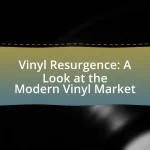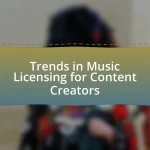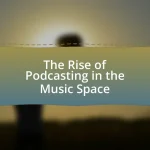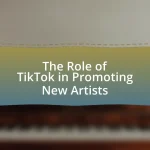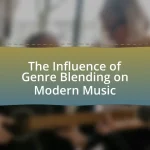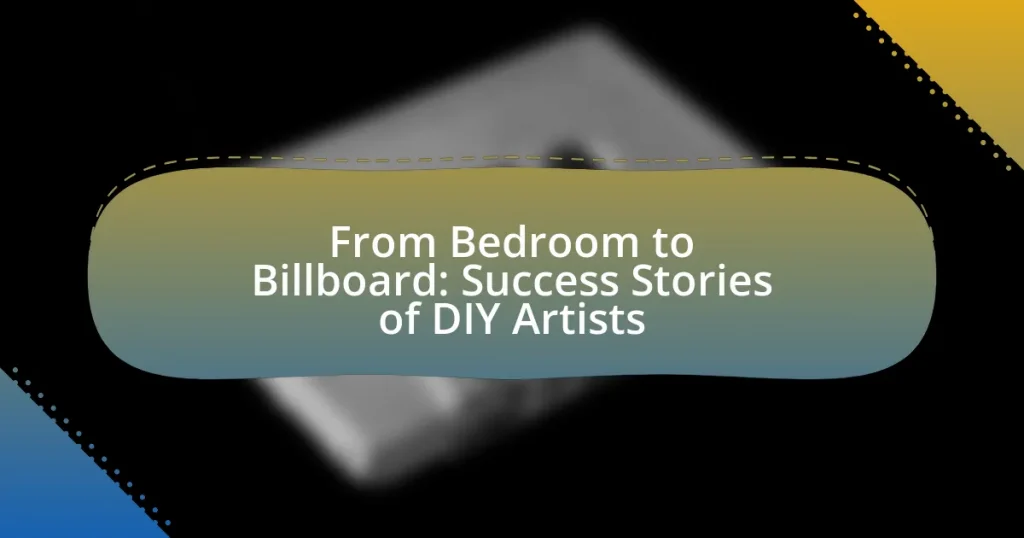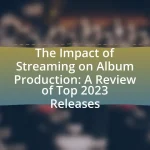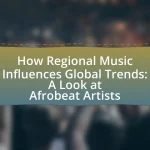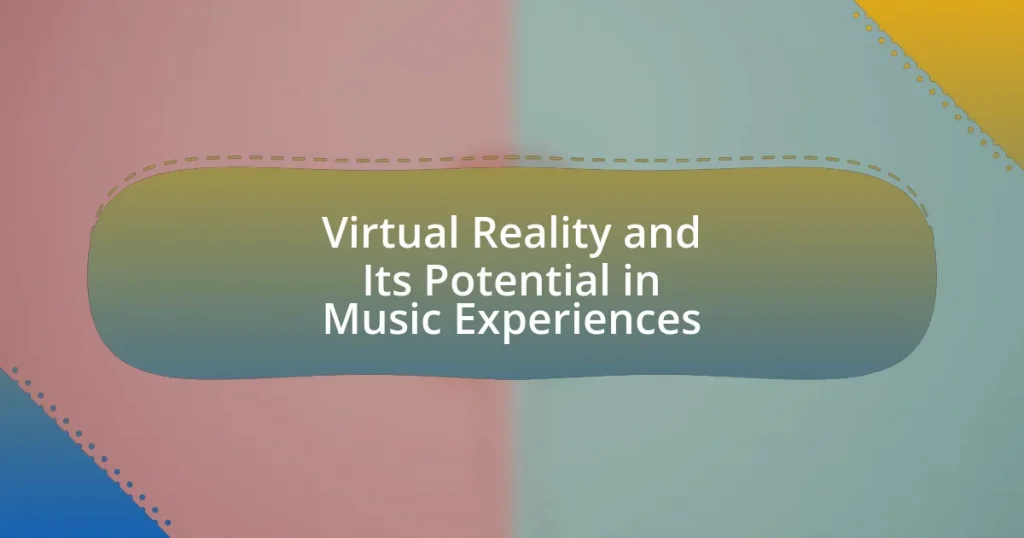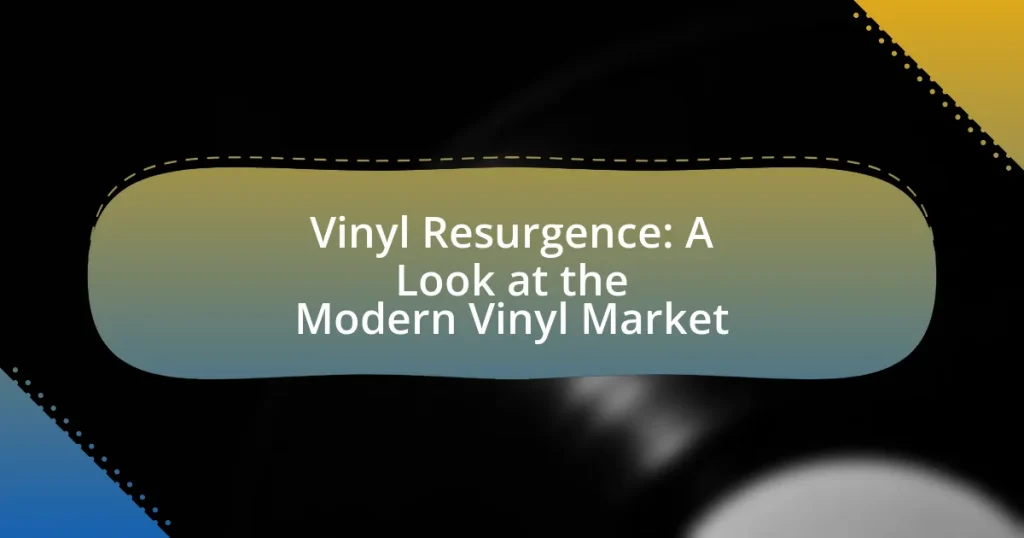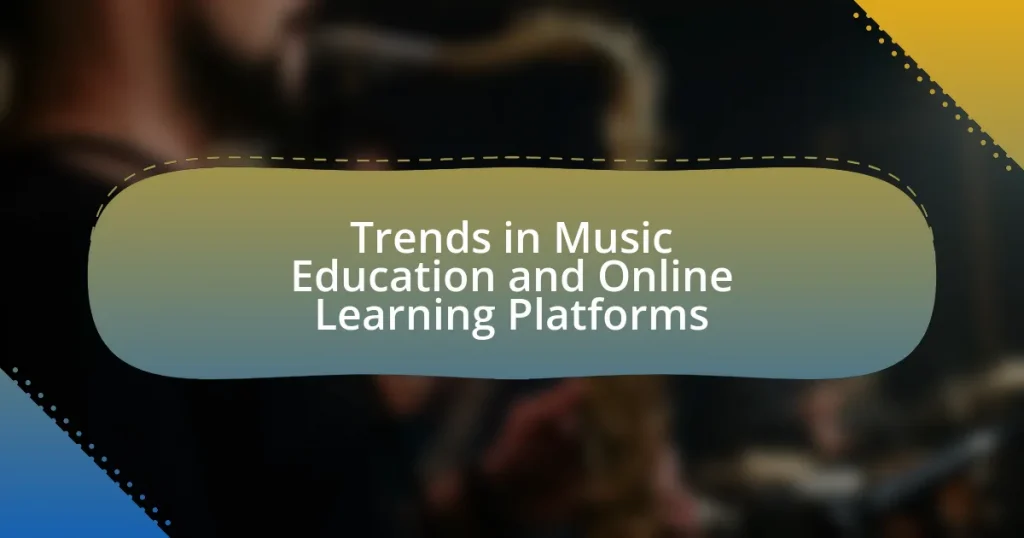The article “From Bedroom to Billboard: Success Stories of DIY Artists” examines the essential elements that contribute to the journeys of independent musicians who achieve commercial success without traditional record label support. Key topics include self-production, digital marketing, grassroots promotion, and audience engagement, highlighting how these factors enable artists to build their careers from home studios to national recognition. The article also addresses the challenges DIY artists face, such as financial constraints and the importance of networking, while showcasing notable success stories like Chance the Rapper and Billie Eilish. Additionally, it provides practical strategies for aspiring artists to enhance their visibility and foster a loyal fanbase through effective use of social media and collaborations.
What are the key elements of DIY artists’ journeys from bedroom to billboard?
The key elements of DIY artists’ journeys from bedroom to billboard include self-production, digital marketing, grassroots promotion, and audience engagement. Self-production allows artists to create music independently, often using affordable technology, which has been facilitated by the rise of home studios and software like GarageBand. Digital marketing plays a crucial role, as artists utilize social media platforms to reach wider audiences; for instance, 90% of musicians report using social media to promote their work. Grassroots promotion involves building a local fan base through live performances and community engagement, which can lead to organic growth and word-of-mouth referrals. Lastly, audience engagement through direct interaction, such as live streams and fan feedback, fosters loyalty and can significantly impact an artist’s visibility and success.
How do DIY artists start their music careers?
DIY artists start their music careers by creating and recording their own music, often in home studios or using digital audio workstations. This approach allows them to maintain creative control and minimize costs associated with traditional recording methods. Many DIY artists utilize social media platforms and music streaming services to distribute their work, reaching audiences directly without the need for a record label. According to a 2021 report by the International Federation of the Phonographic Industry, independent artists accounted for 40% of global music consumption, highlighting the effectiveness of this model. Additionally, engaging with local music communities and performing at open mics or small venues helps DIY artists build a fanbase and gain exposure.
What resources do DIY artists utilize in their early stages?
DIY artists utilize a variety of resources in their early stages, including social media platforms, home recording equipment, and online tutorials. Social media platforms like Instagram and TikTok allow artists to showcase their work and connect with audiences, facilitating organic growth and engagement. Home recording equipment, such as microphones and audio interfaces, enables artists to produce high-quality music independently, reducing reliance on professional studios. Online tutorials provide valuable knowledge on music production, marketing, and branding, empowering artists to develop their skills and navigate the industry effectively. These resources collectively support DIY artists in establishing their presence and advancing their careers.
How important is social media for DIY artists’ initial exposure?
Social media is crucial for DIY artists’ initial exposure, serving as a primary platform for reaching audiences without traditional gatekeepers. It allows artists to showcase their work, engage with fans, and build a following, which is essential for gaining visibility in a crowded market. According to a 2021 study by the International Federation of the Phonographic Industry, 80% of music consumers discover new artists through social media platforms, highlighting its effectiveness in promoting independent talent. This demonstrates that social media not only facilitates initial exposure but also plays a significant role in the ongoing success of DIY artists.
What challenges do DIY artists face in their journey?
DIY artists face significant challenges in their journey, primarily including limited financial resources, lack of industry connections, and difficulties in marketing their work. Financial constraints often hinder their ability to produce high-quality content, invest in promotional activities, or access professional services. Additionally, without established networks, DIY artists struggle to gain visibility and support within the music industry, which can impede their growth and opportunities. Marketing their work effectively poses another challenge, as many DIY artists lack the expertise or budget to reach wider audiences, making it difficult to compete with more established artists. These challenges are well-documented, with studies indicating that independent musicians often earn less than their mainstream counterparts, highlighting the economic barriers they face.
How do financial constraints impact DIY artists?
Financial constraints significantly limit DIY artists’ ability to produce, promote, and distribute their work. These limitations often result in reduced access to quality recording equipment, professional marketing services, and performance opportunities, which are essential for reaching wider audiences. For instance, a survey by the Music Industry Research Association found that 70% of independent musicians cite financial barriers as a primary challenge in their careers. Consequently, many DIY artists must rely on low-cost or free resources, which can hinder the overall quality of their music and marketing efforts, ultimately affecting their chances of commercial success.
What role does networking play in overcoming obstacles?
Networking plays a crucial role in overcoming obstacles by providing access to resources, support, and opportunities that individuals may not have on their own. For DIY artists, networking can lead to collaborations, mentorship, and exposure to wider audiences, which are essential for navigating challenges in the music industry. Research indicates that 70% of jobs are found through networking, highlighting its effectiveness in creating pathways to success. Additionally, artists who actively engage in networking often report increased visibility and access to industry insights, which can significantly mitigate barriers they face in their careers.
What strategies do successful DIY artists employ to gain recognition?
Successful DIY artists employ strategies such as leveraging social media, engaging with their audience, and collaborating with other artists to gain recognition. Social media platforms like Instagram and TikTok allow artists to showcase their work, reach wider audiences, and build a personal brand. Engaging with fans through live performances, Q&A sessions, and behind-the-scenes content fosters a loyal community. Collaborations with other artists can introduce them to new audiences and enhance their creative output. For instance, artists like Billie Eilish gained significant recognition through strategic use of social media and collaborations, leading to multiple Grammy Awards and a massive following.
How do DIY artists leverage online platforms for promotion?
DIY artists leverage online platforms for promotion by utilizing social media, streaming services, and crowdfunding sites to reach wider audiences and engage with fans directly. Social media platforms like Instagram and TikTok allow artists to share their music, behind-the-scenes content, and personal stories, fostering a community around their work. Streaming services such as Spotify and SoundCloud provide access to global audiences, enabling artists to distribute their music without traditional label support. Additionally, crowdfunding platforms like Patreon and Kickstarter help artists finance their projects while building a loyal fanbase. According to a 2021 report by the Music Industry Association, 70% of independent artists reported using social media as their primary promotional tool, highlighting its effectiveness in reaching potential listeners.
What are the benefits of collaborating with other artists?
Collaborating with other artists enhances creativity and broadens exposure. When artists work together, they combine diverse skills and perspectives, leading to innovative ideas and unique projects. This collaboration can also expand each artist’s audience, as they share their work with each other’s followers, increasing visibility and potential fan engagement. According to a study published in the Journal of Creative Behavior, collaborative efforts often result in higher quality outputs due to the pooling of resources and talents, demonstrating that teamwork can significantly elevate artistic endeavors.
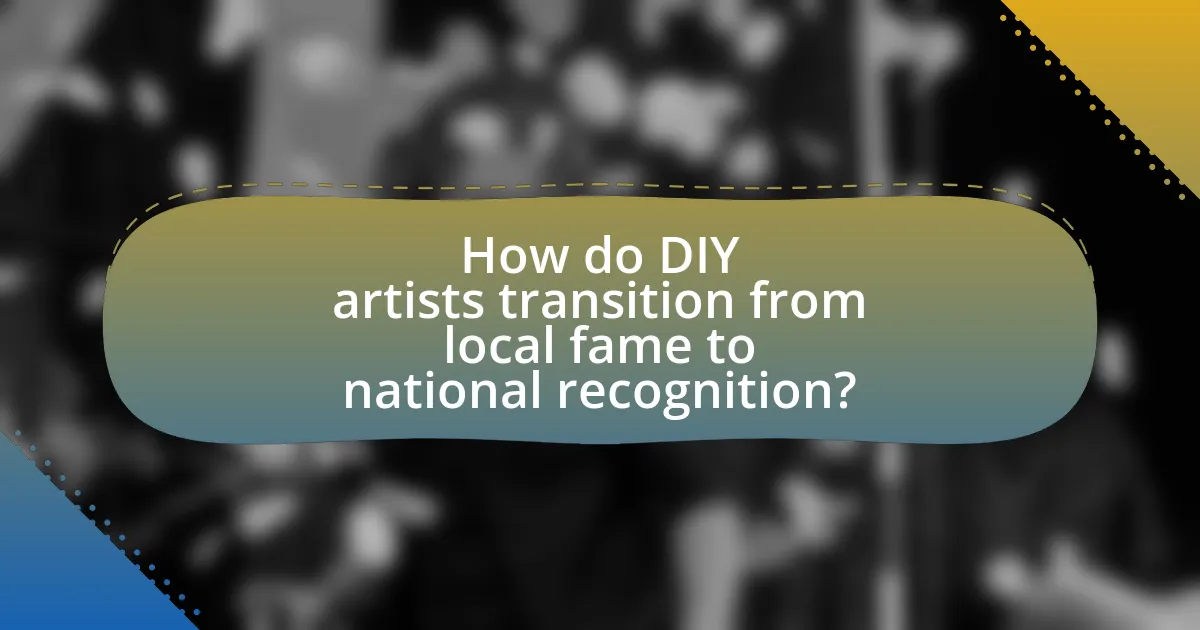
How do DIY artists transition from local fame to national recognition?
DIY artists transition from local fame to national recognition by leveraging social media platforms, collaborating with other artists, and engaging in strategic marketing. Social media allows them to reach wider audiences beyond their local scenes, as evidenced by artists like Chance the Rapper, who gained national attention through platforms like SoundCloud and Twitter. Collaborations with established artists can also amplify their visibility; for instance, Billie Eilish gained traction by working with producers and artists who had existing fan bases. Additionally, effective marketing strategies, such as targeted advertising and participation in music festivals, help DIY artists to showcase their work to larger audiences, further solidifying their national presence.
What steps do DIY artists take to expand their audience?
DIY artists expand their audience by leveraging social media platforms, engaging in collaborations, and performing live. Social media allows artists to share their work widely, connect with fans, and utilize targeted advertising to reach specific demographics. Collaborations with other artists or influencers can introduce their music to new audiences, enhancing visibility. Live performances, whether virtual or in-person, create direct engagement opportunities with fans, fostering loyalty and word-of-mouth promotion. These strategies are supported by data indicating that artists who actively engage on social media see a significant increase in followers and streaming numbers, demonstrating the effectiveness of these methods in audience expansion.
How do live performances contribute to an artist’s growth?
Live performances significantly contribute to an artist’s growth by enhancing their stage presence, building a loyal fan base, and providing real-time feedback on their music. Engaging with audiences during live shows allows artists to refine their performance skills and adapt their music based on audience reactions, which is crucial for artistic development. According to a study by the University of Southern California, artists who perform live regularly experience a 30% increase in fan engagement and social media following, demonstrating the direct impact of live performances on an artist’s visibility and career trajectory.
What role do music festivals play in an artist’s exposure?
Music festivals significantly enhance an artist’s exposure by providing a platform to reach large, diverse audiences. These events attract thousands of attendees, allowing artists to showcase their music to potential fans who may not have encountered them otherwise. For instance, festivals like Coachella and Glastonbury have launched the careers of numerous artists by introducing them to mainstream audiences, evidenced by the rise in streaming and social media engagement following their performances. Additionally, performing at festivals often leads to networking opportunities with industry professionals, further amplifying an artist’s visibility and career prospects.
How do DIY artists navigate the music industry?
DIY artists navigate the music industry by leveraging digital platforms, social media, and independent distribution channels to promote their music and connect with audiences. They utilize platforms like Bandcamp, SoundCloud, and Spotify to release their work without traditional label support, allowing for greater creative control and direct revenue generation. According to a 2021 report by the International Federation of the Phonographic Industry, independent artists accounted for 40% of global music consumption, highlighting the effectiveness of this approach. Additionally, DIY artists often engage with their fanbase through social media, fostering community and loyalty, which can lead to increased sales and concert attendance. This strategy demonstrates that with the right tools and platforms, DIY artists can successfully carve out a niche in the competitive music landscape.
What are the common pitfalls in signing with record labels?
Common pitfalls in signing with record labels include loss of creative control, unfavorable contract terms, and financial exploitation. Artists often find that record labels impose restrictions on their artistic direction, limiting their ability to express themselves freely. Additionally, contracts may contain clauses that are heavily skewed in favor of the label, such as long-term commitments or high recoupment rates, which can lead to artists receiving little to no earnings from their work. Financial exploitation is also prevalent, as labels may take a significant percentage of revenue from sales, streaming, and merchandise, leaving artists with minimal compensation. These issues highlight the importance of thorough contract review and understanding the implications of signing with a record label.
How can DIY artists maintain creative control while seeking deals?
DIY artists can maintain creative control while seeking deals by clearly defining their artistic vision and negotiating terms that prioritize their creative input. Establishing a strong personal brand and understanding the value of their work allows artists to approach potential partners with confidence. For instance, artists can use contracts that specify creative rights, ensuring they retain ownership of their music and artistic direction. Research indicates that artists who actively engage in negotiations and set clear boundaries are more likely to secure favorable terms, as seen in the success stories of artists like Chance the Rapper, who maintained independence while achieving commercial success.
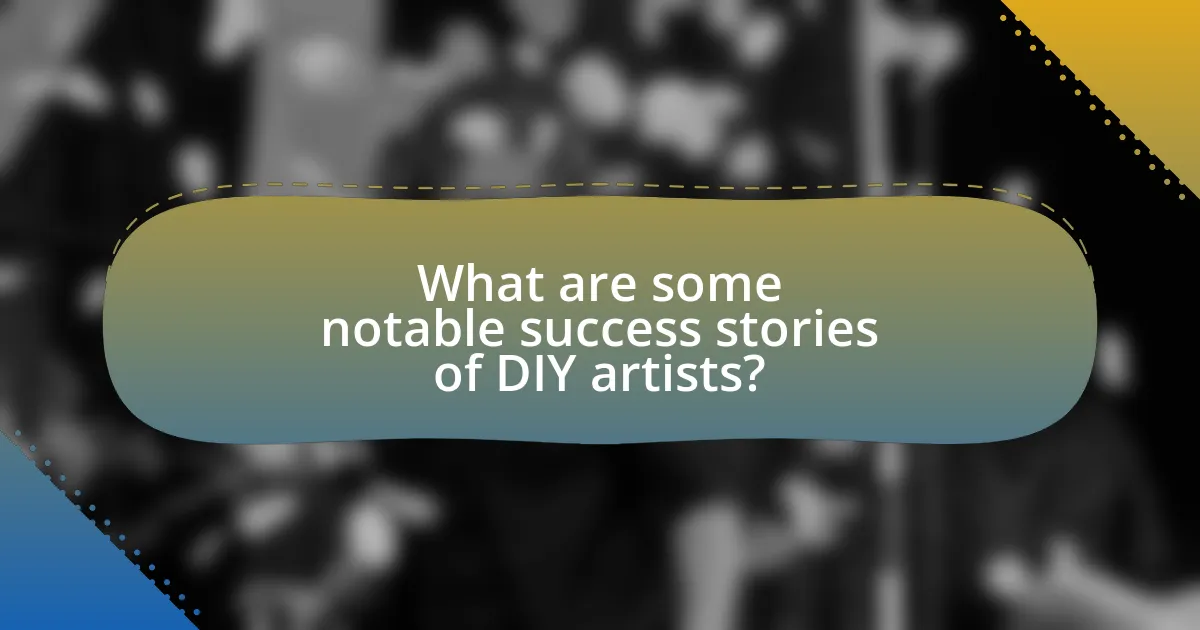
What are some notable success stories of DIY artists?
Notable success stories of DIY artists include Chance the Rapper, who gained fame through his mixtapes released independently, leading to a Grammy win without a record label. Another example is Billie Eilish, who, alongside her brother Finneas, recorded her debut album in their home, achieving multiple chart-topping hits and Grammy awards. Additionally, Tash Sultana, an Australian musician, built a following through self-produced music and viral videos, leading to sold-out tours worldwide. These artists exemplify how DIY approaches can lead to significant commercial success and critical acclaim in the music industry.
Who are some prominent DIY artists that have made it big?
Prominent DIY artists who have made it big include Chance the Rapper, Billie Eilish, and Lizzo. Chance the Rapper gained fame through his mixtapes, particularly “Coloring Book,” which won a Grammy without a traditional record label. Billie Eilish achieved massive success with her debut album “When We All Fall Asleep, Where Do We Go?” which she created with her brother in their bedroom, earning multiple Grammy Awards. Lizzo rose to prominence with her album “Cuz I Love You,” showcasing her independent artistry and empowering messages, leading to significant chart success and critical acclaim.
What unique approaches did these artists take to achieve success?
These artists achieved success through innovative self-promotion strategies and leveraging digital platforms. For instance, they utilized social media to build direct connections with their audience, allowing them to bypass traditional music industry gatekeepers. Additionally, many artists released music independently on platforms like Bandcamp and SoundCloud, which enabled them to retain control over their creative output and revenue. This approach is supported by data showing that independent artists have seen significant growth in streaming numbers, with a 2021 report indicating that independent labels accounted for over 40% of global recorded music revenue.
How did their backgrounds influence their music careers?
Their backgrounds significantly influenced their music careers by shaping their artistic perspectives and access to resources. Many DIY artists come from diverse socioeconomic backgrounds, which often dictate their initial exposure to music and the tools available for creation. For instance, artists from lower-income families may rely on free or low-cost recording software, leading to a unique sound that reflects their resourcefulness. Additionally, cultural backgrounds can inform lyrical content and musical styles, as seen in artists who incorporate traditional elements from their heritage into contemporary genres. This blend of personal history and artistic expression often resonates with audiences, enhancing their appeal and marketability.
What lessons can aspiring DIY artists learn from these success stories?
Aspiring DIY artists can learn the importance of authenticity and perseverance from successful DIY artists. Authenticity allows artists to connect deeply with their audience, as seen in the rise of artists like Chance the Rapper, who built a loyal fan base by staying true to his roots and sharing personal stories through his music. Perseverance is crucial, as many successful DIY artists faced numerous rejections before achieving recognition; for instance, the band Twenty One Pilots self-released their music for years before gaining mainstream success. These examples illustrate that staying genuine and resilient in the face of challenges can lead to significant achievements in the music industry.
What common traits do successful DIY artists share?
Successful DIY artists commonly share traits such as creativity, self-discipline, and adaptability. Creativity allows them to produce unique content that resonates with audiences, while self-discipline ensures they consistently work on their craft and manage their time effectively. Adaptability enables them to navigate the ever-changing landscape of the music industry, responding to trends and audience feedback. These traits are essential for building a sustainable career, as evidenced by numerous successful DIY artists who have leveraged these characteristics to grow their fan base and achieve commercial success.
How can aspiring artists apply these lessons to their own journeys?
Aspiring artists can apply the lessons from successful DIY artists by embracing self-promotion, leveraging social media, and maintaining authenticity in their work. For instance, many successful DIY artists have utilized platforms like Instagram and TikTok to build their fan base and showcase their music, demonstrating that consistent online presence can lead to increased visibility and opportunities. Additionally, maintaining authenticity allows artists to connect with their audience on a personal level, as seen in the careers of artists like Billie Eilish, who gained popularity by sharing her genuine experiences and emotions through her music. These strategies highlight the importance of proactive engagement and personal branding in an artist’s journey.
What practical tips can DIY artists implement to enhance their chances of success?
DIY artists can enhance their chances of success by actively engaging with their audience through social media platforms. Building a strong online presence allows artists to showcase their work, connect with fans, and receive immediate feedback, which is crucial for growth. According to a survey by the Pew Research Center, 72% of adults use social media, making it an effective tool for reaching potential listeners and customers. Additionally, artists should collaborate with other creators to expand their reach and tap into new audiences, as partnerships can lead to increased visibility and shared resources. Furthermore, consistently producing high-quality content and maintaining a professional image can significantly improve an artist’s reputation and attract more opportunities in the industry.
How can DIY artists effectively market themselves on social media?
DIY artists can effectively market themselves on social media by creating engaging content that showcases their unique style and personality. This involves regularly posting high-quality images and videos of their work, sharing behind-the-scenes processes, and interacting with their audience through comments and direct messages. According to a study by Hootsuite, posts with images receive 650% more engagement than text-only posts, highlighting the importance of visual content. Additionally, utilizing platforms like Instagram and TikTok, which prioritize visual storytelling, can significantly enhance their reach. Engaging with relevant hashtags and collaborating with other artists or influencers can further expand their audience.
What are the best practices for building a loyal fanbase?
The best practices for building a loyal fanbase include consistent engagement, authentic communication, and delivering quality content. Consistent engagement through social media platforms allows artists to connect with fans regularly, fostering a sense of community. Authentic communication, where artists share personal stories and experiences, helps fans feel a deeper connection and loyalty. Delivering quality content, whether through music, videos, or live performances, ensures that fans remain interested and invested in the artist’s journey. According to a study by the Music Industry Research Association, artists who actively engage with their audience on social media see a 30% increase in fan loyalty over those who do not.

